November 23, 2025 | 10:12 GMT +7
November 23, 2025 | 10:12 GMT +7
Hotline: 0913.378.918
November 23, 2025 | 10:12 GMT +7
Hotline: 0913.378.918
It is common knowledge that livestock farms in Hai Phong, whether small or large, are all utilizing bank loans to develop production. Having suffered damage after Typhoon No. 3, all calculations of expected revenue were disrupted, and farm owners worried that when the deadline came, they would not have money to pay the debt or bank interest.
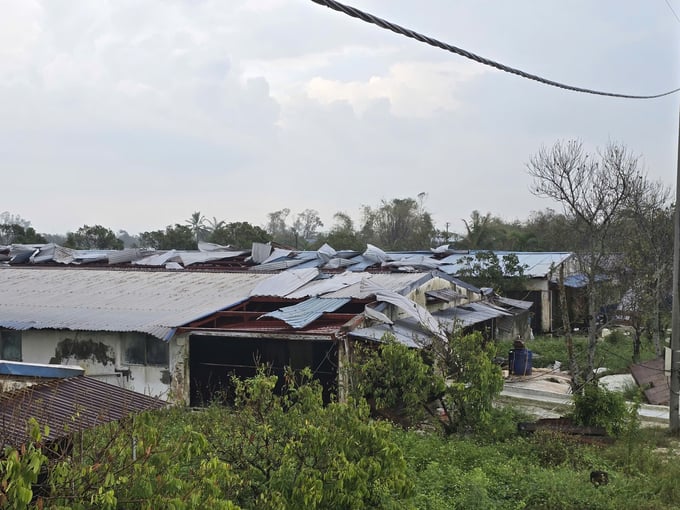
The devastated pig breeding farm of Bui Minh Hoa's family on Bau Island after Typhoon Yagi. Photo: Dinh Muoi.
In My Duc commune, An Lao district, Bui Minh Hoa's pig farm is located within the Bau island area, surrounded by a wide and deep river, making this area almost inviolable in recent years. With a strict farming process, even Hoa himself did not expect that one day his family's "famous" pig farm would suffer such great losses.
“The storm hit and the power went out. The workers had to crawl on the road to get to shelter, and I followed the riverbank to the end of the farm to start the generator. Due to the strong wind, the electrical system in the sow pen short-circuited, so when I started the generator, the whole herd of pigs was electrocuted to death,” Hoa said.
Although there were no casualties, the damage inflicted on the farm was possibly worth tens of billions of VND. Everything was paralyzed, and there was almost no income left, so overcoming the consequences and the costs to get the entire farm back into operation would be very difficult without assistance from the State and banks.
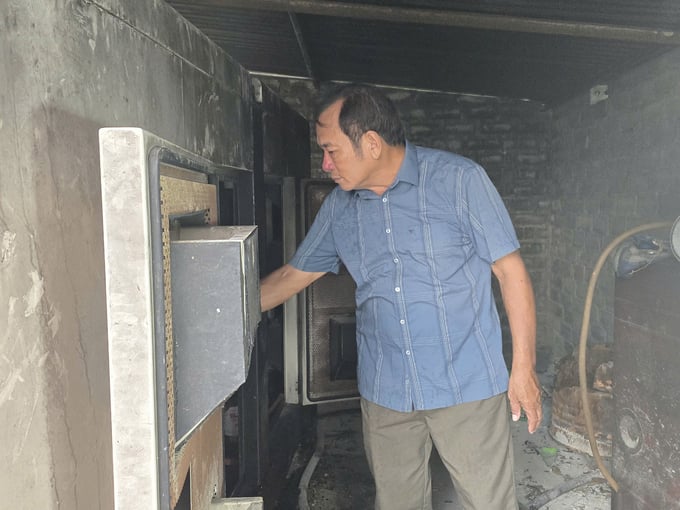
Bui Minh Hoa points to the generator that caused the sows to die. Photo: Dinh Muoi.
Nguyen Van Thap's family in Tan Thanh ward also suffered a lot of loss after Typhoon No. 3 as the entire barn was flooded, the corrugated iron roof was blown off, causing more than 300 pigs ready to be sold to die. To limit the damage, Thap was forced to move the pigs to Thai Binh province overnight, hoping to "save as much as possible," but the pigs were slowly dying due to being submerged in water for so long.
“My family is currently in debt to the bank and acquaintances for the livestock farm, so if the debt is not deferred or extended, it will be very difficult to resolve all the debts. If we pay the bank, we will not have money to invest in reproduction and vice versa,” he said.
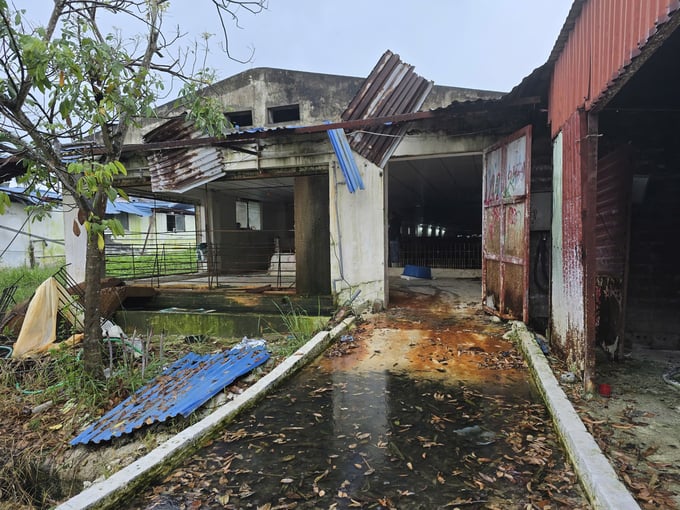
A pig farm devastated after the storm. Photo: Dinh Muoi.
After Typhoon No. 3, water sources in canal systems were mostly polluted. Many places emitted foul odors due to objective conditions, and floodwater could not drain quickly. Almost all livestock farms, particularly in low-lying areas, were flooded or had rainwater overflow. If there were no measures to handle, the risk of disease outbreaks was extremely high.
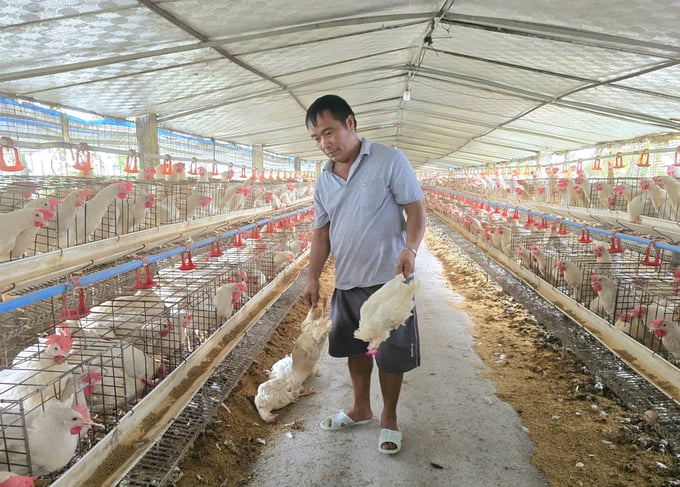
Chickens in some farms began to die sporadically. Photo: Dinh Muoi.
Being an experienced large-scale breeder with more than 20,000 egg-laying chickens but after the storm, Nguyen Quang Vinh (Toan Thang commune, Tien Lang district) still suffered losses of more than 2,000 chickens and 1,500 m2 of corrugated iron roof, totaling VND 1 billion.
From his perspective, although the damage was quite large and it would take two years for all systems to return to normal, what he worries about most right now is the spread of diseases. "If we are not careful, the damage could be many times greater than the storm," Vinh said.
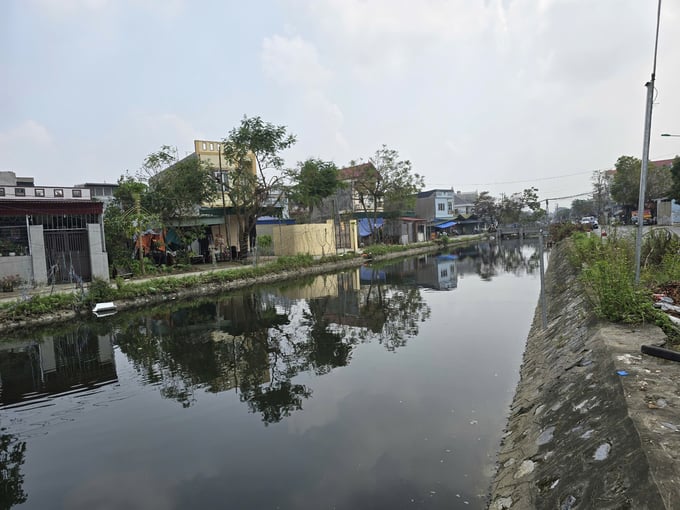
Water from livestock farms and residential areas overflows into canals after heavy rains, causing serious pollution. It is also one of the sources of disease transmission. Photo: Dinh Muoi.
Hai Phong Department of Agriculture and Rural Development has requested localities to strengthen monitoring to detect early and promptly handle cases of livestock and poultry infected with disease or suspected of being infected with diseases such as African swine fever, avian influenza, foot-and-mouth disease, lumpy skin disease in cattle and buffalo, and blue ear disease.
People and farm owners absolutely must not slaughter, conduct trades on sick or dead animals, and must not throw dead animals into the environment. As for livestock and poultry in areas where epidemics have occurred, high-risk areas, and areas affected by floods, it is necessary to quickly review and organize full vaccination according to regulations.
Translated by Samuel Pham
/2025/11/22/3633-1-072521_760.jpg)
(VAN) The signing ceremony took place under the witness of Prime Minister Pham Minh Chinh and President of the Republic of South Africa Cyril Ramaphosa.

(VAN) Severe flooding in Khanh Hoa Province has caused catastrophic damage estimated at around USD 30 million, with the agriculture and irrigation sectors alone accounting for roughly USD 15.7 million in losses.

(VAN) Official Telegram No. 226/CD-TTg, issued on November 21, 2025, mandates enhanced management and utilization of national reserves to support flood response and relief efforts in the Central Region.

(VAN) The Politburo has demanded a high concentration of efforts on urgent relief tasks, ensuring absolute prevention of hunger, cold, and shortages of clean water or medicine among the population.

(VAN) Water resources during the 2025–2026 dry season in the Mekong River Basin basically meet domestic use and production needs, but localized shortages may still occur due to saltwater intrusion.

(VAN) Vietnam and Japan have committed to deepening cooperation on projects under the Joint Crediting Mechanism (JCM), improving waste management, and advancing the circular economy.

(VAN) Digital transformation is becoming a core driver of proactive, precise, and safer management of dams and reservoirs nationwide.